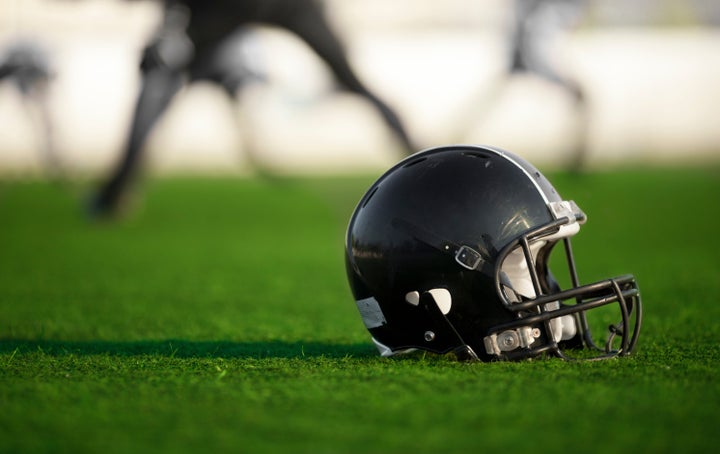
Although we often hear more about knee, ankle, shoulder, and elbow injuries among professional athletes than we do about spine injuries, they're more common than one might think. High-impact sports like football, wrestling, and mixed martial arts carry a higher risk of spine injuries compared with other sports.
Myth #1 – Spine injuries aren’t common in pro sports.
Due to the high-impact and high-energy nature of sports like mixed martial arts, football, wrestling, hockey, and motocross, it is very common for athletes to sustain cervical (neck) and lumbar (low back) spine injuries. These injuries occur from significant impacts on an athletes’ spine. For example a hard tackle in football, body check in hockey, or fall from a motocross bike can all affect the integrity and structure of the spinal column.
Myth #2 – Spine injuries always affect the spinal cord.
People often associate spine injuries, whether in an athlete or a non-athlete, with paralysis. In reality, the spinal cord, which generally terminates at L1-L2, is one part (albeit, critically important) of the spinal structure. The approximately 45 cm spinal cord travels through the middle of the small bones (vertebrae) that are stacked on top of one another to protect the spinal cord. Discs rest between the vertebrae to cushion the spine and allow for movement and flexibility. Muscles and ligaments connect the vertebrae and support the spinal structure, and nerves branch out through the spaces between the vertebrae and run throughout the body. An injury can occur in any of these structures in the spine.
Although injury to any of these structures can affect the spinal cord, particularly in the cervical (neck) and thoracic (middle) spine areas, lumbar (low back) injuries are much less likely to affect the spinal cord. This again, is due to the fact that the normal spinal cord stops at the top of the lumbar spine. When a professional athlete has a herniated disc in the low back (L4-L5), this may cause pain and weakness; but true paralysis is highly unlikely.
Myth #3 – It’s ok to play through back pain.
Continuing to participate in a sport with a back, neck, or spine injury could make the injury much worse. In these cases, the team physician or athlete needs to make the difficult decision to sit out temporarily or even end a career early to avoid further damage. NFL player David Wilson had to make the decision to retire in 2014 after his doctors advised him that continuing to play could make his condition much worse.
Myth #4 – Spine injuries like herniated disc and spinal fractures must require surgery.
Herniated discs and spinal fractures may require surgery if the athlete has a severe case, or if more conservative treatment does not help. In the majority of cases, treatment begins with conservative methods. Even with conservative treatment, athletes can be sidelined for weeks or even months while they heal. For example, during the World Cup last summer, Brazil’s Neymar da Silva Santos Júnior fractured a vertebral transverse process during a match. He didn’t need to have surgery, but sat out of the remaining World Cup matches.
Myth #5 – If an athlete needs a spinal fusion, their career is over.
Spinal fusion is a surgical procedure that involves fusing together vertebrae that are causing pain, creating one solid piece of bone. Fusions prevent motion between the vertebrae, as well as the stretching of the surrounding nerves, muscles, and ligaments.The success and outcome of spine surgery depend on the athlete, surgeon, and the severity of the injury. Though a spinal fusion does reduce some flexibility in the spine, it doesn’t necessarily mean an athlete’s career is over. Most notably, Peyton Manning had a spinal fusion in his neck, and was able to return to football after he recovered.
Myth #6 – Arm or leg dysfunction is rarely caused by a spine injury.
Nerves branch out from the spine and run throughout the body to carry messages from the brain to different parts of the body. A spinal injury, such as a herniated disc, can irritate or put pressure on these nerves at the point where they branch out from the spine. Depending on the location of the nerve, this can cause pain in the arms or legs and may actually be mistaken for an injury in the leg or arm, rather than the spine. This was believed to be the case for Arian Foster of the Houston Texans in 2013, and foster ended up needing surgery to correct the problem.
Myth #7 – Burners and Stingers aren’t that serious.
Neck stingers, also called burners, are very common in football and often occur from a blow to the shoulder or neck. This injury affects a bundle of nerves called the brachial plexus, which branches out from the spinal cord. The branches from brachial plexus run down the arm, so a stinger can cause numbness, tingling, and burning in the arm. Although symptoms can subside quickly, an athlete should immediately be evaluated by a medical professional to evaluate for more severe nerve damage.
Myth #8 – Spinal cord injuries always result in paralysis
Spinal cord injuries do not always result in paralysis, but they are still very serious. In many cases, athletes such as David Wilson, with multiple or persistent spinal cord injuries are advised to retire to avoid the risk of further injury and possible paralysis. As well, Devonte Holloman of the Dallas Cowboys was forced to retire at the age of 23 due to a bruised spinal cord.
While fortunately rare, catastrophic spinal cord injuries resulting in paralysis, sadly still occur usually from a big hit or fall. Several NFL players, such as Reggie Brown, Eric LeGrand, and Darryl Stingley, have sustained injuries during the game that left them paralyzed. Cheerleaders also are at significant risk during a fall from a stunt.
Myth #9 – Equipment first — technique and training are secondary in preventing injuries.
Dead wrong! While injuries cannot always be prevented, professional athletes are trained to use proper techniques that minimize the risk of injury. In football, players are trained to use the shoulder as a main point of contact when making a hit, rather than the head or neck (spear tackling). Wrestlers are often taught to keep their heads up during a takedown and avoid dangerous moves. In general, athletes are conditioned to strengthen their core and back muscles, which helps to provide support to the spine.
Though perhaps not as common as other sports injuries, spine injuries should be taken very seriously in sports, whether collegiate, professional, or otherwise. While not all injuries can be prevented, coaches, athletes, and team trainers must work in concert to mitigate the preventable ones.
Keep your head up out there and play safe!
